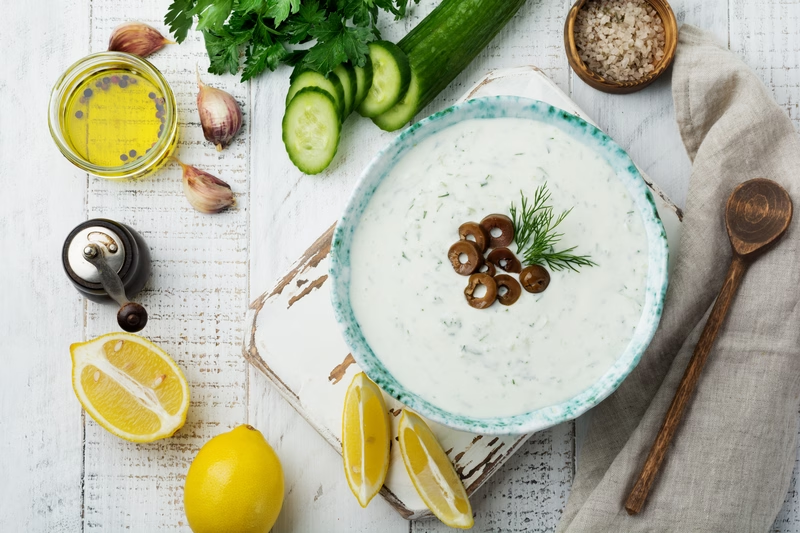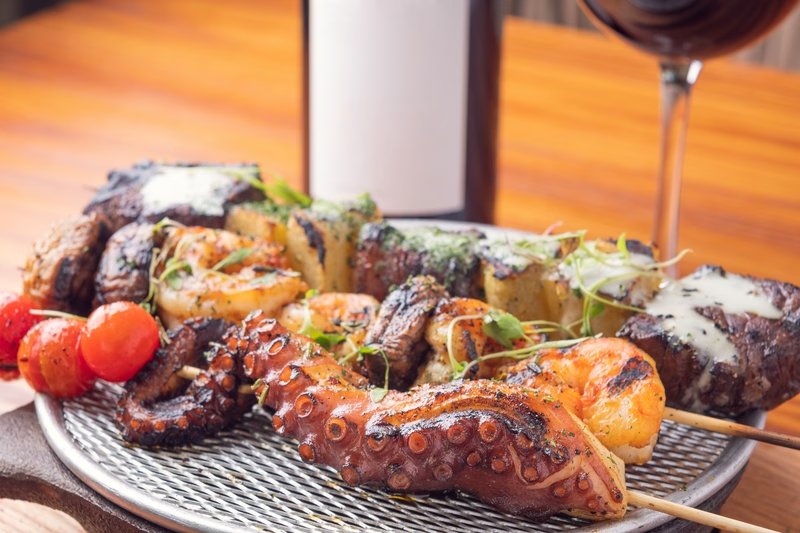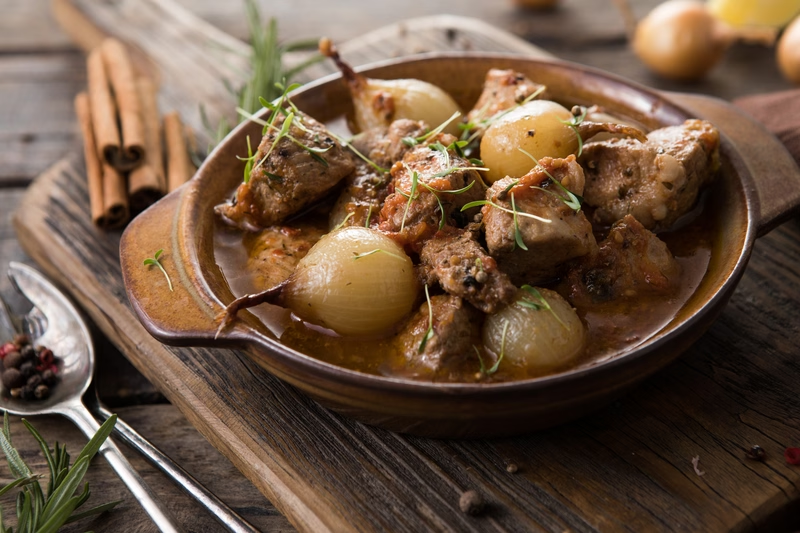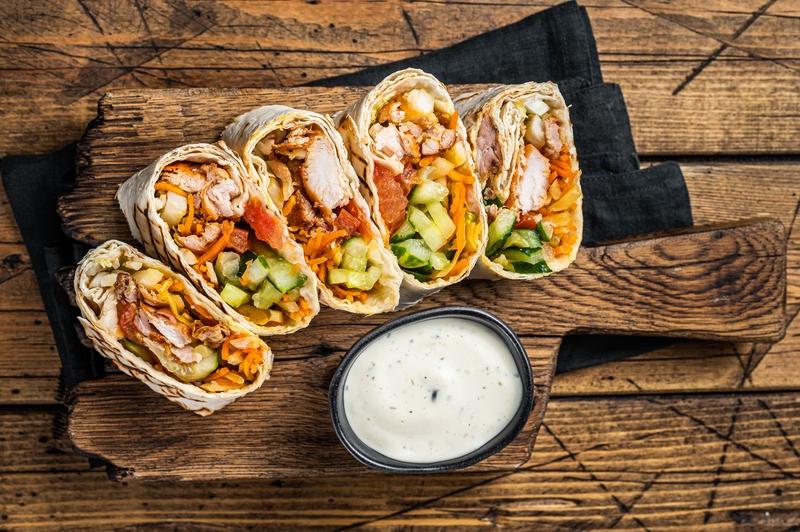Athens, the cradle of Western civilization, offers a culinary journey that spans over 4,000 years of history. From ancient recipes that have survived millennia to modern interpretations of classic dishes, the Greek capital provides an authentic taste of Mediterranean cuisine at its finest. This comprehensive guide explores the must-try foods, traditional tavernas, and hidden culinary gems that make Athens a true food lover’s paradise.
The Foundation of Greek Cuisine: Ancient Flavors, Modern Tables
The Mediterranean Trinity

Greek cuisine is built upon the foundation of the Mediterranean diet, centered around three sacred ingredients that have sustained Greeks since antiquity:
Olive Oil: Often called “liquid gold,” Greek olive oil is among the world’s finest. Extra virgin olive oil from regions like Kalamata and Crete forms the base of countless dishes and is consumed generously in Athens’ kitchens.
Wine: Greece is home to some of the world’s oldest wine-making traditions, with varieties like Assyrtiko, Agiorgitiko, and the famous Retsina accompanying meals throughout the city.
Bread: From rustic village loaves to delicate phyllo pastry, bread in its many forms is sacred in Greek culture, often blessed before meals.
Essential Greek Cooking Methods
Grilling (Psito): Meats and fish are grilled over charcoal, imparting a distinctive smoky flavor.
Braising (Kouneli): Slow-cooking in olive oil with tomatoes, onions, and herbs.
Frying (Tiganito): Light frying in olive oil, particularly for vegetables and cheese.
Baking (Fourno): Clay pot cooking that seals in flavors and creates tender, aromatic dishes.
Iconic Greek Dishes You Must Try in Athens
Moussaka: The Crown Jewel of Greek Cuisine

This layered casserole represents the pinnacle of Greek cooking, combining eggplant, meat sauce, and béchamel in perfect harmony. Traditional moussaka requires hours of preparation, with each layer carefully crafted.
Components of Authentic Moussaka:
- Sliced eggplant, lightly fried or grilled
- Rich meat sauce (usually lamb or beef) with tomatoes, onions, and spices
- Creamy béchamel sauce on top
- Aged cheese (typically kefalotyri or kasseri)
- Slow-baked until golden and bubbling
Where to Find the Best Moussaka:
- Funky Gourmet (Paramithias 13): Michelin-starred modern interpretation
- Thanasis (Mitropoleos 69): Traditional taverna near Monastiraki
- Dionysos (Rovertou Galli 43): Classic preparation with Acropolis views
Souvlaki: Greece’s National Fast Food
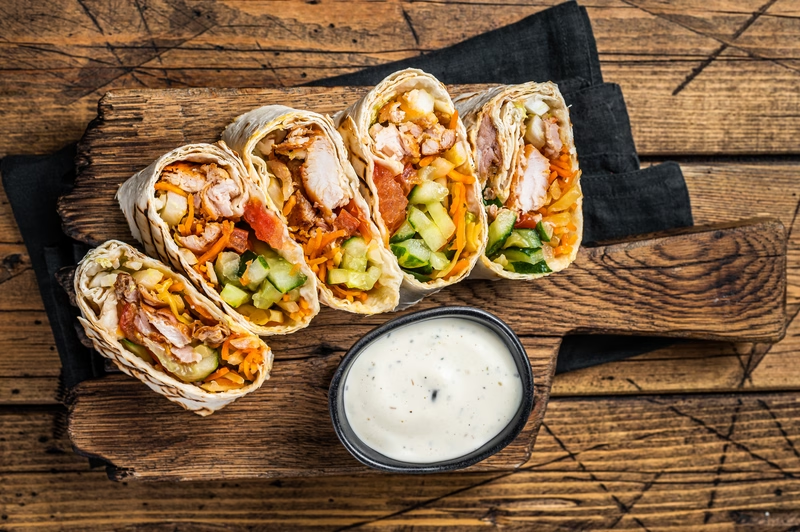
Souvlaki is more than just grilled meat on a stick – it’s a cultural institution that brings Greeks together. These perfectly seasoned, charcoal-grilled skewers are served with pita bread, tzatziki, and fresh vegetables.
Types of Souvlaki:
- Pork Souvlaki: The most traditional, marinated in olive oil, lemon, and oregano
- Chicken Souvlaki: Tender breast meat with Mediterranean herbs
- Lamb Souvlaki: Rich, flavorful meat perfect for special occasions
- Vegetarian Souvlaki: Halloumi cheese or grilled vegetables
Athens’ Best Souvlaki Spots:
- Kostas (Agia Irini Square): Tiny shop serving locals since 1950
- Thanasis (Mitropoleos 69): Famous for their perfectly grilled meat
- Bairaktaris (Plateia Monastirakiou 2): Historic taverna in Monastiraki
Greek Salad (Horiatiki): The Village Salad

Authentic Greek salad bears little resemblance to what’s served abroad. This rustic dish combines the finest ingredients in perfect simplicity.
Traditional Horiatiki Ingredients:
- Ripe tomatoes (never refrigerated)
- Crisp cucumbers
- Red onions
- Green peppers
- Kalamata olives
- Feta cheese (in one large block, not crumbled)
- Olive oil and red wine vinegar
- Dried oregano
- No lettuce (this is crucial!)
Spanakopita: Spinach and Feta in Phyllo
This beloved pastry showcases the Greek mastery of phyllo dough. Layers of paper-thin pastry encase a filling of spinach, feta, herbs, and sometimes rice.
Traditional Spanakopita Elements:
- Fresh spinach (never frozen)
- Crumbled feta cheese
- Fresh dill, parsley, and green onions
- Phyllo pastry brushed with olive oil
- Beaten eggs for binding
Mezze Culture: The Art of Sharing
Understanding Mezze
Mezze represents the social aspect of Greek dining, where small plates are shared among friends and family. This tradition encourages conversation and creates a relaxed dining atmosphere.
Essential Mezze Dishes:
Tzatziki: Thick Greek yogurt with cucumber, garlic, and dill. The key is using strained yogurt and properly salted, drained cucumbers.
Dolmades: Grape leaves stuffed with rice, herbs, and sometimes meat. The vegetarian version (yalantzi) is equally popular.
Taramosalata: Creamy fish roe spread made from carp or cod roe, blended with bread, olive oil, and lemon.
Melitzanosalata: Roasted eggplant spread with garlic, olive oil, and herbs.
Fava: Yellow split pea puree, traditionally from Santorini, served with capers and onions.
Saganaki: Fried cheese, typically kasseri or kefalotyri, served flaming with ouzo.
Where to Experience Authentic Mezze
Dionysos (Rovertou Galli 43): Upscale mezze with Acropolis views Funky Gourmet (Paramithias 13): Modern interpretations of traditional mezze Kuzina (Adrianou 9): Contemporary Greek cuisine in Thissio
Seafood: Treasures from the Aegean
Fresh Fish and Seafood Traditions
Athens’ proximity to the Aegean Sea ensures incredibly fresh seafood. Fish is typically grilled whole and served with lemon, olive oil, and sea salt.
Must-Try Seafood Dishes:
Grilled Octopus: Tender tentacles grilled over charcoal, served with olive oil and vinegar.
Psari Plaki: Whole fish baked with tomatoes, onions, and herbs in olive oil.
Kakavia: Traditional fisherman’s soup, similar to bouillabaisse.
Garides Saganaki: Shrimp baked with tomatoes and feta cheese.
Kalamarakia: Fried squid rings, crispy outside and tender inside.
Top Seafood Restaurants in Athens
Varoulko Seaside (Akti Koumoundourou 52): Michelin-starred seafood restaurant Funky Gourmet (Paramithias 13): Creative seafood preparations Dionysos (Rovertou Galli 43): Traditional fish dishes with stunning views
Meat Dishes: Hearty and Flavorful
Traditional Meat Preparations
Greek meat dishes are characterized by long, slow cooking methods that develop deep, rich flavors.
Arni Psito: Roast lamb with lemon, garlic, and oregano, traditionally cooked for Easter.
Kokoras Krasatos: Rooster braised in wine with tomatoes and spices.
Pastitsio: Greek lasagna with pasta, meat sauce, and béchamel.
Stifado: Beef or rabbit stew with pearl onions and tomatoes.
Youvetsi: Lamb or beef baked with orzo pasta in tomato sauce.
Best Meat Restaurants
Funky Gourmet (Paramithias 13): Modern interpretations of classic meat dishes Thanasis (Mitropoleos 69): Traditional grilled meats Dionysos (Rovertou Galli 43): Classic Greek meat preparations
Vegetarian Delights: The Fasting Tradition
Lenten Cuisine
Greek Orthodox fasting traditions have created a rich repertoire of vegetarian dishes that are full of flavor and nutrition.
Fasolada: White bean soup with tomatoes, onions, and herbs, considered the national dish of Greece.
Gemista: Stuffed vegetables (tomatoes, peppers, zucchini) with rice and herbs.
Gigantes Plaki: Large lima beans baked in tomato sauce with herbs.
Ladera: Vegetables cooked in olive oil, meant to be eaten at room temperature.
Spanakorizo: Spinach and rice cooked with tomatoes and herbs.
Vegetarian-Friendly Restaurants
Avocado (Nikis 30): Dedicated vegetarian restaurant near Syntagma Funky Gourmet (Paramithias 13): Excellent vegetarian tasting menus Dionysos (Rovertou Galli 43): Traditional vegetarian mezze
Street Food and Quick Bites
Souvlaki Joints and Gyros
Athens’ street food scene centers around quick, delicious meals that workers and students can grab on the go.
Gyros: Rotating spit-roasted meat (usually pork or chicken) served in pita with tzatziki, onions, and tomatoes.
Souvlaki Wraps: Grilled meat skewers wrapped in pita with accompaniments.
Spanakopita: Spinach pie sold at bakeries and street vendors.
Tyropita: Cheese pie, often eaten for breakfast or as a snack.
Best Street Food Locations
Monastiraki Flea Market: Multiple souvlaki stands and traditional eateries Ermou Street: Bakeries and quick-bite shops Plaka: Tourist-friendly but authentic options
Desserts and Sweets: Divine Indulgences
Traditional Greek Desserts
Greek desserts often feature honey, nuts, and phyllo pastry, creating rich, satisfying treats.
Baklava: Layers of phyllo with nuts and honey syrup, the most famous Greek dessert.
Galaktoboureko: Custard wrapped in phyllo and soaked in syrup.
Loukoumades: Honey-soaked doughnuts topped with cinnamon and nuts.
Rizogalo: Creamy rice pudding with cinnamon.
Karydopita: Walnut cake soaked in syrup.
Kourabiedes: Butter cookies covered in powdered sugar, traditional for Christmas.
Best Dessert Spots
Funky Gourmet (Paramithias 13): Modern interpretations of classic desserts Zonar’s (Voukourestiou 9): Historic patisserie since 1939 Dionysos (Rovertou Galli 43): Traditional desserts with coffee
Coffee Culture: From Traditional to Modern
Greek Coffee Tradition
Coffee plays a central role in Greek social life, with distinct preparation methods and customs.
Greek Coffee (Ellinikos): Finely ground coffee boiled in a special pot called a briki, served unfiltered.
Frappé: Iced coffee drink invented in Greece, made with instant coffee, sugar, and milk.
Freddo Espresso: Modern Greek iced coffee made with espresso and cold milk foam.
Freddo Cappuccino: Iced cappuccino that’s become extremely popular in Athens.
Best Coffee Spots in Athens
Taf Coffee (Emmanouil Benaki 7): Third-wave coffee roasters Yiasemi (Mnisikleous 23): Traditional kafeneio in Plaka Little Kook (Karaiskaki 17): Whimsical themed café
Wine and Spirits: Ancient Traditions
Greek Wine Renaissance
Greece is experiencing a wine renaissance, with ancient indigenous varieties gaining international recognition.
Notable Greek Wine Varieties:
- Assyrtiko: Crisp white wine from Santorini
- Agiorgitiko: Elegant red wine from Nemea
- Xinomavro: Complex red wine from Northern Greece
- Moschofilero: Aromatic white wine from Mantinia
- Retsina: Traditional wine flavored with pine resin
Traditional Greek Spirits
Ouzo: Anise-flavored spirit, the national drink of Greece, traditionally served with mezze.
Tsipouro: Clear spirit similar to grappa, often served with small plates.
Mastika: Liqueur flavored with mastic from Chios island.
Best Wine Bars and Ouzeries
Funky Gourmet (Paramithias 13): Extensive Greek wine selection Dionysos (Rovertou Galli 43): Traditional wine pairings Brettos (Kydathineon 41): Historic distillery and bar in Plaka
Neighborhood Food Guide
Plaka: Tourist-Friendly Traditional Food
Plaka, the old town beneath the Acropolis, offers traditional tavernas with authentic Greek cuisine, though quality can vary due to tourist traffic.
Recommended Plaka Restaurants:
- Dionysos (Rovertou Galli 43): Upscale dining with Acropolis views
- Scholarhio (Tripodon 14): Traditional taverna with live music
- Thanasis (Mitropoleos 69): Excellent souvlaki near Monastiraki
Psyrri: Hip Nightlife and Modern Eateries
This trendy neighborhood combines traditional tavernas with modern restaurants and bars.
Psyrri Highlights:
- Funky Gourmet (Paramithias 13): Michelin-starred modern Greek cuisine
- Kuzina (Adrianou 9): Contemporary Greek food
- Thanasis (Mitropoleos 69): Traditional souvlaki
Kolonaki: Upscale Dining
Athens’ upscale shopping district offers sophisticated restaurants and cafés.
Kolonaki Dining:
- Funky Gourmet (Paramithias 13): Fine dining Greek cuisine
- Dionysos (Rovertou Galli 43): Elegant traditional restaurant
- Spondi (Pyrronos 5): Michelin-starred French-Mediterranean
Exarchia: Alternative and Authentic
This bohemian neighborhood offers authentic tavernas frequented by locals and students.
Exarchia Favorites:
- Rosebud (Spefsippou 40): International cuisine
- Funky Gourmet (Paramithias 13): Creative modern Greek
- Dionysos (Rovertou Galli 43): Traditional Greek dining
Seasonal Eating in Athens
Spring (March-May)
- Artichokes: Prepared in various ways, often with lemon and herbs
- Fava Beans: Fresh broad beans, eaten raw or cooked
- Wild Greens: Horta (wild greens) are foraged and cooked simply
- Easter Specialties: Lamb, tsoureki (sweet bread), and red eggs
Summer (June-August)
- Tomatoes: At their peak, essential for Greek salad
- Grilled Fish: Fresh from the Aegean Sea
- Gazpacho: Cold soups perfect for hot weather
- Watermelon: Often paired with feta cheese
Fall (September-November)
- Olives: New harvest begins, fresh olives appear
- Grapes: Wine harvest season brings fresh grapes
- Pomegranates: Used in both sweet and savory dishes
- Chestnuts: Roasted and sold on street corners
Winter (December-February)
- Oranges: Citrus season brings wonderful variety
- Lamb Dishes: Hearty stews and roasts
- Legumes: Bean soups and lentil dishes
- Christmas Sweets: Melomakarona and kourabiedes
Food Markets and Shopping
Central Market (Varvakios Agora)
The heart of Athens’ food scene, this historic market offers the freshest ingredients and traditional products.
Market Highlights:
- Meat Section: Whole lambs, fresh sausages, and traditional charcuterie
- Fish Section: Daily catch from the Aegean and Mediterranean
- Spice Vendors: Aromatic herbs and spices
- Cheese Shops: Wide variety of Greek cheeses
Neighborhood Markets
Monastiraki Flea Market: Antiques, but also some food vendors Ermou Street: Bakeries and specialty food shops Kolonaki Market: Upscale ingredients and gourmet items
Dining Etiquette and Customs
Greek Dining Traditions
Meal Times:
- Breakfast: Light, often just coffee and pastry
- Lunch: Main meal, typically 2-4 PM
- Dinner: Late, usually after 9 PM
- Mezze: Can happen any time, social eating
Dining Customs:
- Meals are leisurely and social
- Bread is always on the table
- Wine or ouzo often accompanies meals
- Tipping is 10-15% in restaurants
- Sharing dishes is common and encouraged
Restaurant Types
Taverna: Traditional restaurant serving classic Greek dishes Psistaria: Grill house specializing in grilled meats Ouzeri: Establishment serving ouzo with mezze Kafeneio: Traditional coffee house, mainly for men Mezedopoleio: Restaurant specializing in mezze
Modern Greek Cuisine Movement
Contemporary Greek Chefs
Athens has seen a renaissance in Greek cuisine, with chefs reimagining traditional dishes with modern techniques.
Notable Modern Greek Restaurants:
- Funky Gourmet (Paramithias 13): Michelin-starred innovation
- Spondi (Pyrronos 5): French-Mediterranean fusion
- Dionysos (Rovertou Galli 43): Elevated traditional cuisine
Fusion and Innovation
Modern Greek cuisine maintains respect for traditional flavors while incorporating international techniques and presentations.
Budget-Friendly Eating
Affordable Authentic Options
Souvlaki Stands: Quick, delicious, and very affordable Bakeries: Fresh bread, pies, and pastries Tavernas: Many offer excellent value for traditional dishes Student Areas: Around universities, cheaper authentic food
Money-Saving Tips
- Lunch is often cheaper than dinner
- Look for “tourist menus” which can offer good value
- Eat where locals eat for authenticity and better prices
- Many places offer bread and basic mezze complimentary
Food Tours and Cooking Classes
Guided Food Experiences
Athens Food Tours: Professional guides showing hidden gems Cooking Classes: Learn to prepare traditional dishes Market Tours: Shopping with chefs for ingredients Wine Tastings: Exploring Greek wine varieties
Self-Guided Food Adventures
Food Walking Routes: Create your own culinary tour Market Visits: Explore Central Market independently Neighborhood Hopping: Different areas offer different specialties
Conclusion: Embracing the Spirit of Greek Hospitality
Athens offers more than just a meal – it provides a window into 4,000 years of culinary tradition, where every dish tells a story of the people, the land, and the sea. From the simplest souvlaki eaten standing at a street corner to an elaborate mezze feast that lasts for hours, Greek cuisine in Athens is about connection, community, and the celebration of life’s simple pleasures.
The key to truly experiencing Athenian food culture is to understand that dining is a social ritual. Greeks don’t just eat to sustain themselves; they eat to connect with others, to celebrate, to mark important moments, and to show hospitality to strangers. The concept of “philoxenia” (love of strangers) is deeply embedded in Greek culture, and nowhere is this more evident than in the way food is shared.
Whether you’re savoring a perfectly grilled octopus while watching the sunset over the Aegean, sharing a bottle of Assyrtiko with new friends in a traditional taverna, or simply enjoying a morning coffee in a local kafeneio, Athens offers countless opportunities to connect with Greek culture through its food.
Remember that the best meals in Athens often happen in the most unexpected places – a family-run taverna tucked away in a side street, a souvlaki stand where locals gather, or a traditional ouzeri where the mezze appears magically with each round of drinks. Don’t be afraid to venture beyond the tourist areas, to try dishes you’ve never heard of, and to embrace the Greek approach to dining: slow, social, and filled with joy.
The flavors of Athens will stay with you long after you leave, not just as memories of delicious food, but as reminders of the warmth, hospitality, and zest for life that define Greek culture. From the first bite of authentic moussaka to the last sip of ouzo, Athens offers a culinary journey that nourishes both body and soul, connecting you to a tradition that has sustained and delighted people for millennia.
So come hungry, come curious, and come ready to embrace the Greek way of life – one delicious meal at a time. Yamas! (Cheers!)

